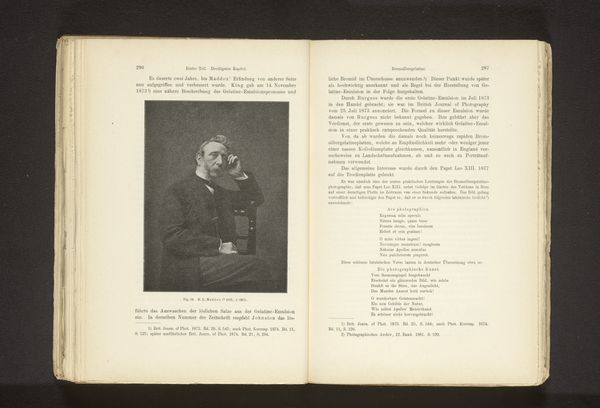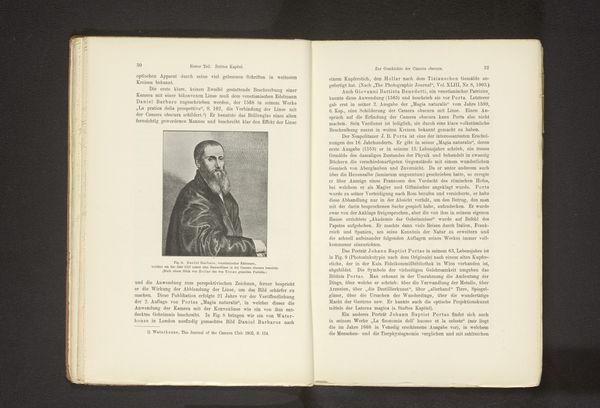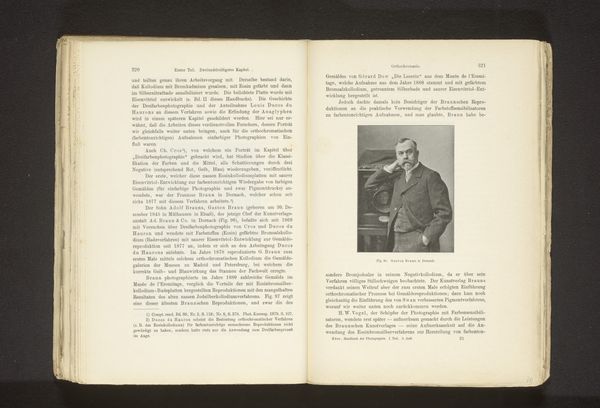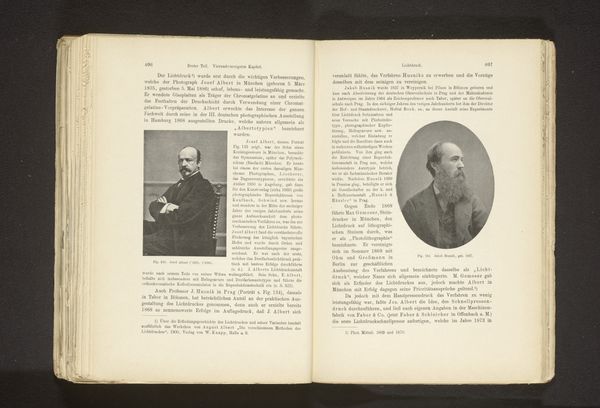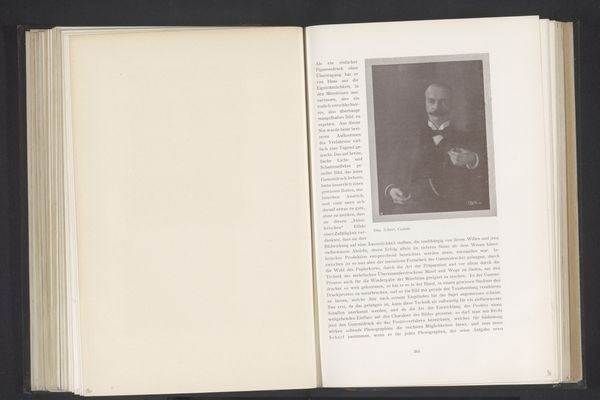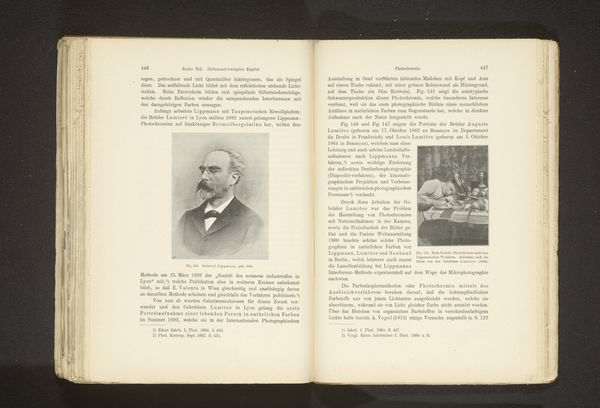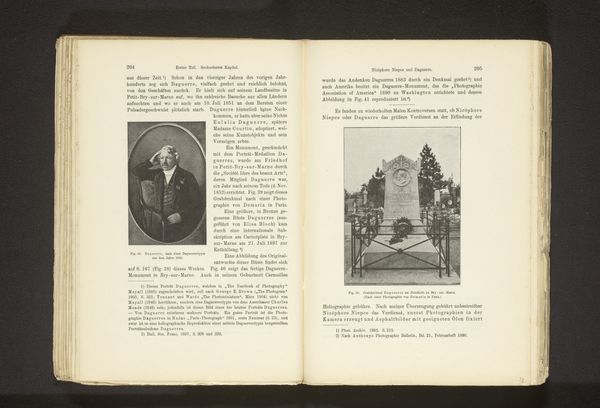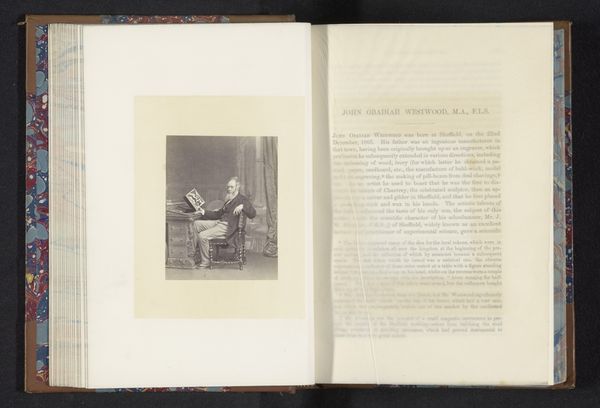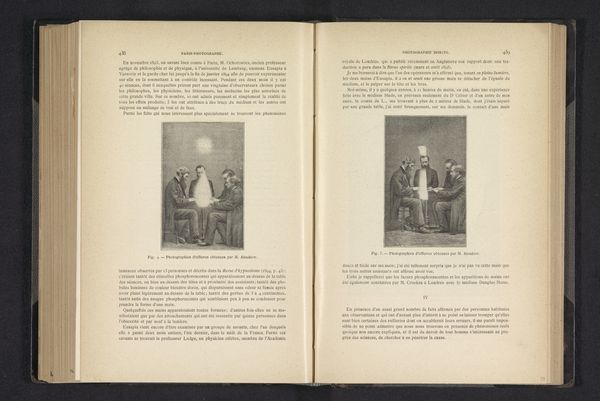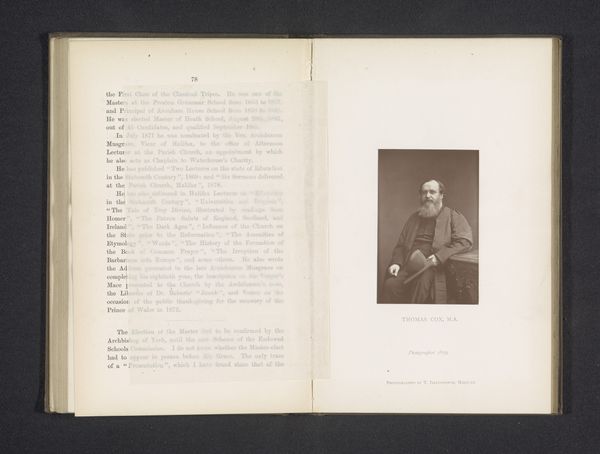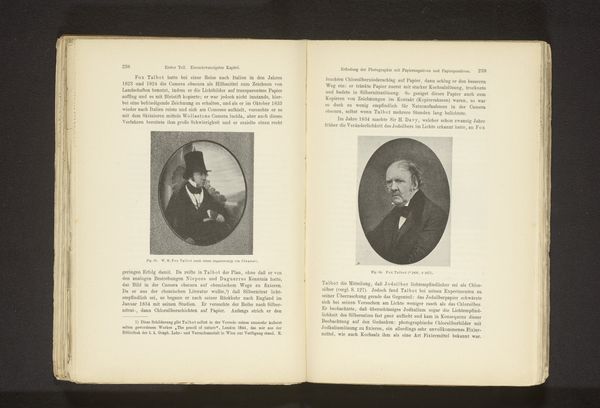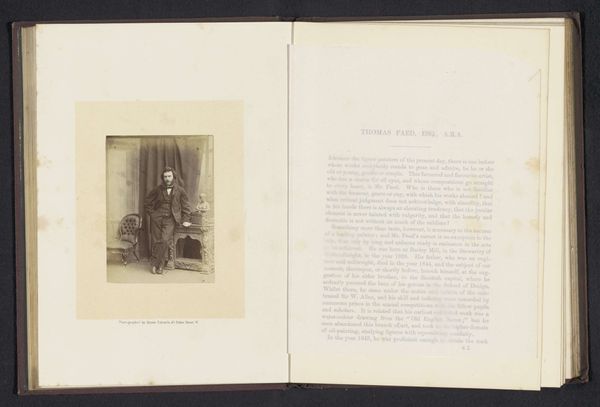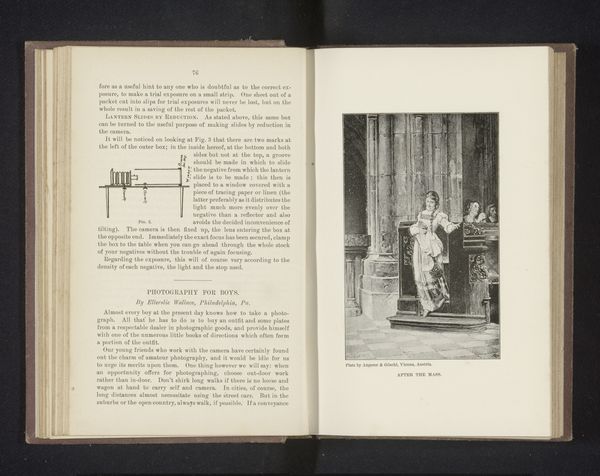
print, photography
#
portrait
# print
#
book
#
photography
Dimensions: height 99 mm, width 60 mm
Copyright: Rijks Museum: Open Domain
Editor: So, here we have a photographic print titled "Portret van Peter Wilhelm Friedrich von Voigtländer," dating from before 1905. It's fascinating because it shows not only a portrait, but also an early camera. It almost feels like a historical document as much as a work of art. What do you see in this piece, considering its age and context? Curator: What immediately strikes me is the image's engagement with the power dynamics inherent in portraiture, amplified by the emergent technology of photography. We need to consider Voigtländer’s position as an optician. He is, through his inventions, influencing representation itself. The act of portraying him becomes a commentary on control – who has the power to represent and how does technology shape that? Notice the somewhat rigid pose and formal attire. It speaks volumes about the subject's social standing. Editor: I see what you mean. It's like a visual manifestation of technological advancement and social hierarchy combined. Do you think the inclusion of the camera changes the message? Curator: Absolutely. It implicates the viewer in the process of observation and, therefore, of social judgment. This image becomes less about the individual and more about the structures that allow for the creation and dissemination of such images. What stories are excluded by this particular mode of representation? Editor: That makes me think about who *doesn't* get their portrait taken, and who doesn't control the narrative around their own image. It really broadens the scope of the work beyond just a simple portrait. Curator: Exactly. And consider the access required to be photographed at this time, or the inherent biases of the photographer who creates such images. The visual language reinforces existing social structures. Hopefully by engaging critically with historical art, we may then strive toward greater self-awareness in our present moment. Editor: It definitely gives me a lot to think about, especially in the context of how images function today! Curator: Indeed, reflecting on these historical dynamics of power and representation equips us to understand contemporary modes of both creation and consumption.
Comments
No comments
Be the first to comment and join the conversation on the ultimate creative platform.
